The Women of the Artist's Studio Museum Network
International Women's Day 2022
The studio museum, like the museum itself, is in many ways a nineteenth-century phenomenon. Even the Dürer House in Nuremberg, established as a place of pilgrimage almost as soon as the artist died in 1527, wasn't formally opened as a museum until 1871. As a result, the majority of the artists whose studios have been preserved as museums are male. But not all of them. Meet some of the women artists in our Network whose homes and studios you can still visit today...
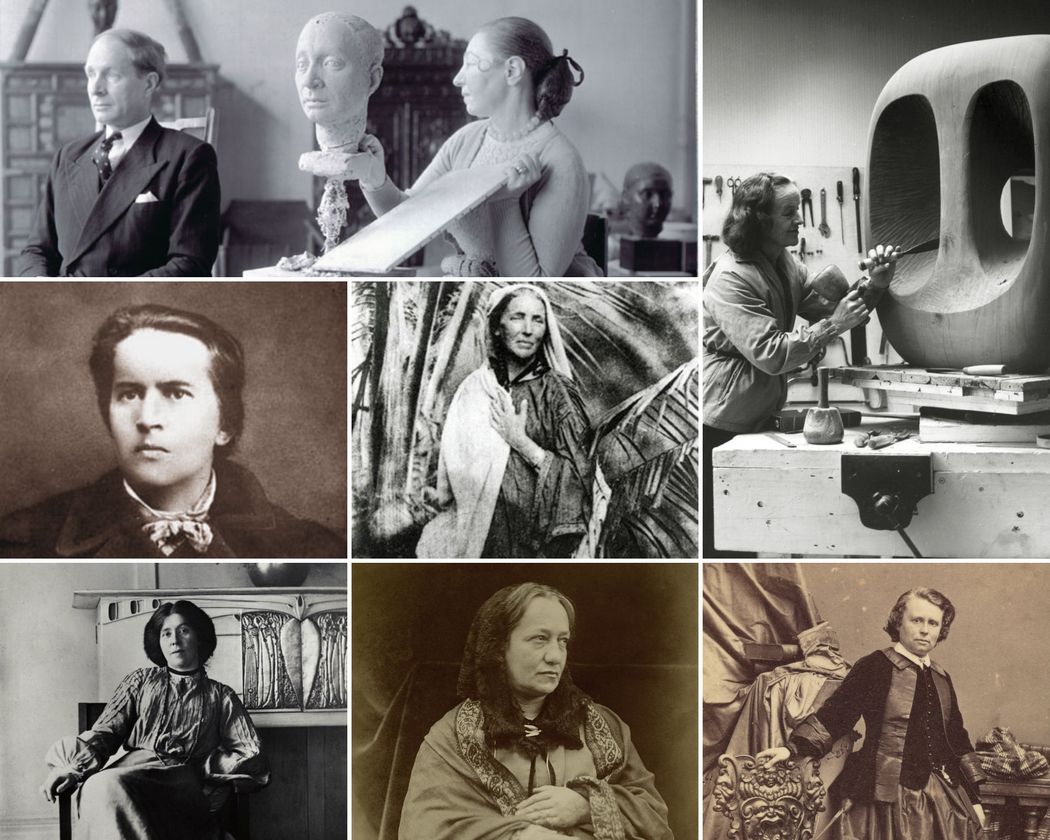
Some of the women featured in the Artist's Studio Museum Network
From top left: Dora Gordine; Barbara Hepworth; Anna Golubkina; Marianne North; Margaret MacDonald Mackintosh; Julia Margaret Cameron; Rosa Bonheur
Betzy Akersloot-Berg
Norwegian-born artist Betzy Akersloot-Berg (1850-1922) was a seascape and landscape painter who played an active role in the contemporary artistic community. In 1896, she and her husband purchased a sixteenth-century naval house which she named 'Tromp's Huys' as a tribute to the Dutch admiral Cornelis Tromp. The majority of the 300 paintings that she produced throughout her career are now kept at Tromp's Huys, which opened as a museum in 1950. Read more about Tromp's Huys.
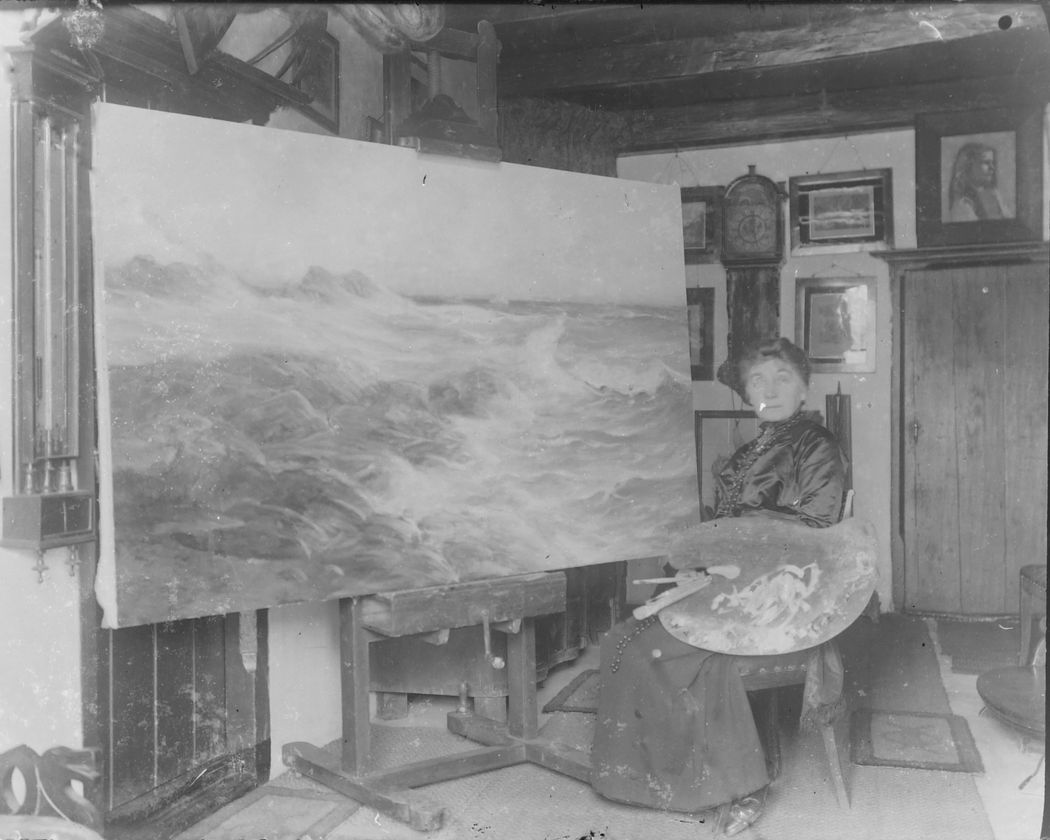
Betzy Akersloot-Berg
Rosa Bonheur
Rosa Bonheur (1822 - 1899) was born into an artistic family and moved to Paris at a young age. Her father trained her as an artist, with a curriculum that, from the beginning, had a strong emphasis on animals. Château Rosa Bonheur is preserved and presented much as it would have appeared during the forty years Bonheur lived and worked here. Read more about Château Rosa Bonheur.
'Everything is still there…Her embroidered blouse, her hat, her boots, her palettes, her paintbrushes, her colors, her notebooks of sketches or notes, even her cigarette butts… The smell of turpentine mingles with the artist's violet perfume...' -- Château Rosa Bonheur
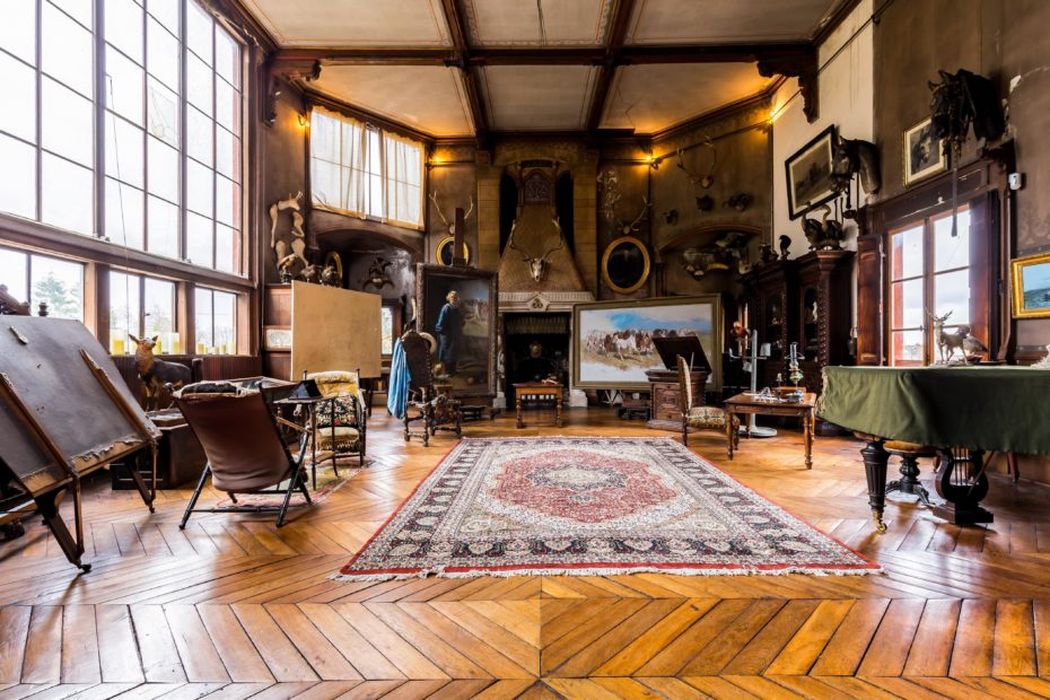
Château Rosa Bonheur
Julia Margaret Cameron
Julia Margaret Cameron (1815-1879) was one of the most important figures in early photography. The portraits she created remain among the most famous images of many Victorian celebrities, and her daring experimentation with close-up and diffused focus techniques influenced many later developments in photographic art. She did most of her work at Dimbola, the house she bought with her husband in the 1860s in the Isle of Wight. Read more about Dimbola House and Galleries.
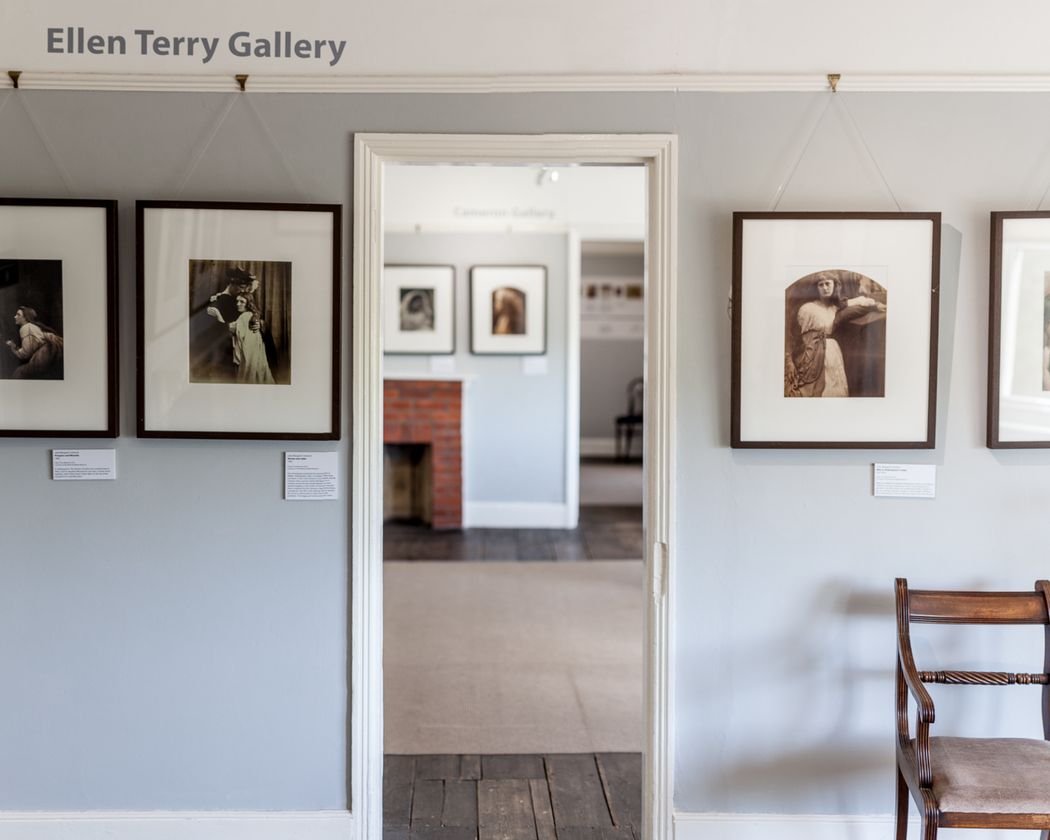
Dimbola Museum and Galleries
Dora Gordine and Dorich House
Dorich House is the former studio home of the sculptor Dora Gordine (1895-1991) and her husband the Hon. Richard Hare, a scholar of Russian art and literature. Now Grade II listed, the building was completed in 1936, to Gordine's design, and is an exceptional example of a modern studio house created by and for a female artist. Read more about Dorich House.
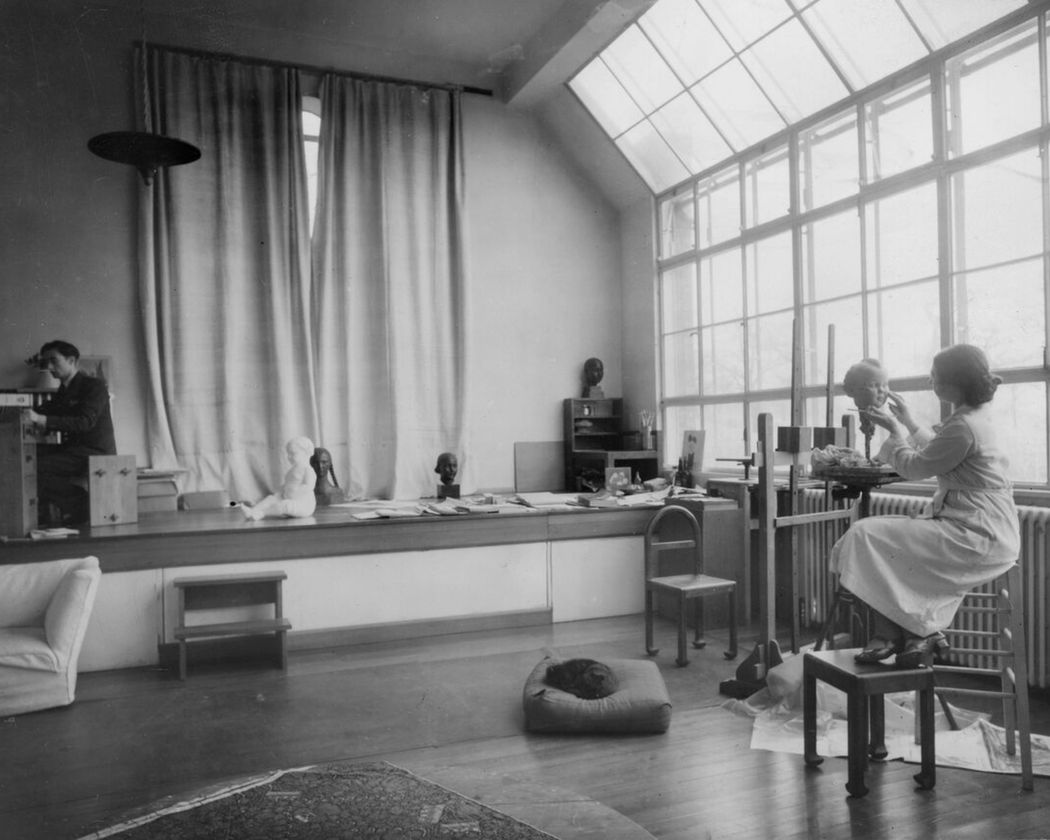
Dora Gordine in her studio
A still from the film 'Dora Gordine Ars Gratia Artis' 2018. Viking Visionary Films.
Anna Golubkina
A student of Auguste Rodin, Anna Golubkina (1864-1927) belonged to the so-called 'Silver Age' of Russian culture, at the turn of the nineteenth century. In 1910, Golubkina rented two studios in a beloved corner of old Moscow; this would be her workspace until the end of her life. When she died, she bequeathed the studio and a number of her works to the Soviet state, and the Anna Golubkina Memorial Studio was established. Read more about the Anna Golubkina Memorial Studio.
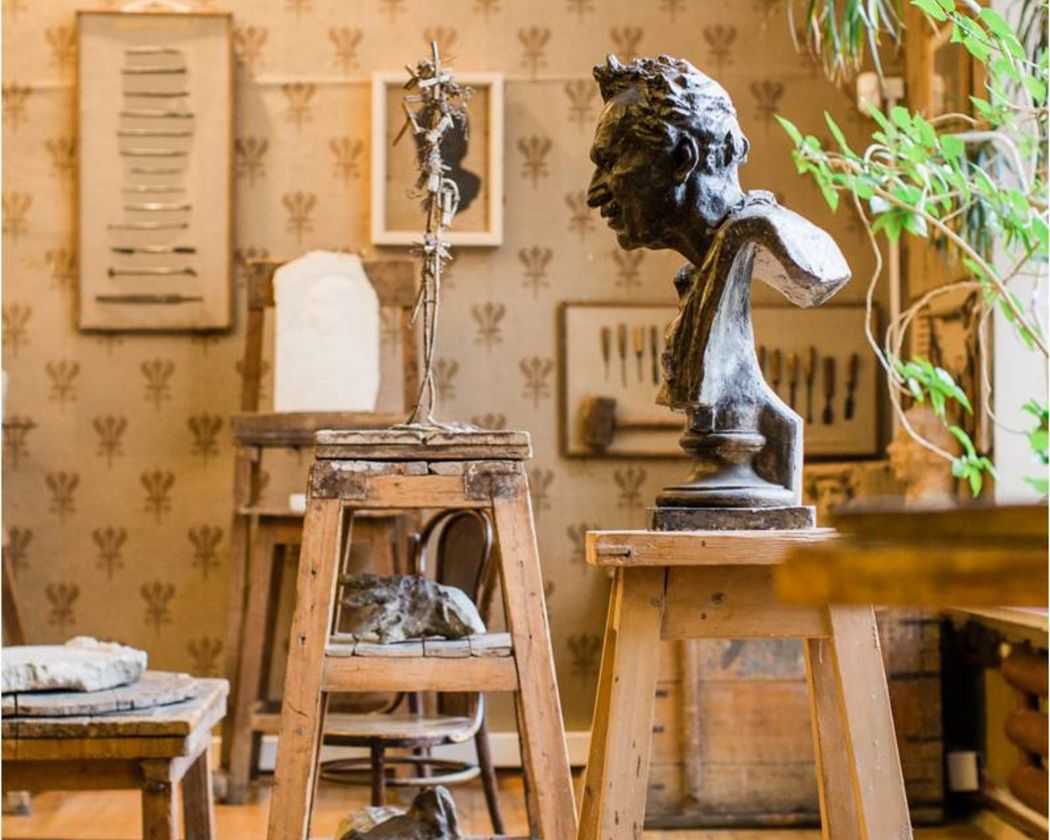
Anna Golubkina Memorial Studio
The former studio of the Russian sculptor Anna Golubkina
Margaret Hardman
The Hardmans' House in Liverpool, the former home and studio of the husband-and-wife photographers E Chambré (1898-1988) and Margaret Hardman (1909-1970) celebrates and curates work by both. Although Edward was the better known half of the couple, Margaret was a gifted photographer in her own right. Acknowledged as the brains behind the business, he often said that he "could not have done it without her." Read more about The Hardmans' House.
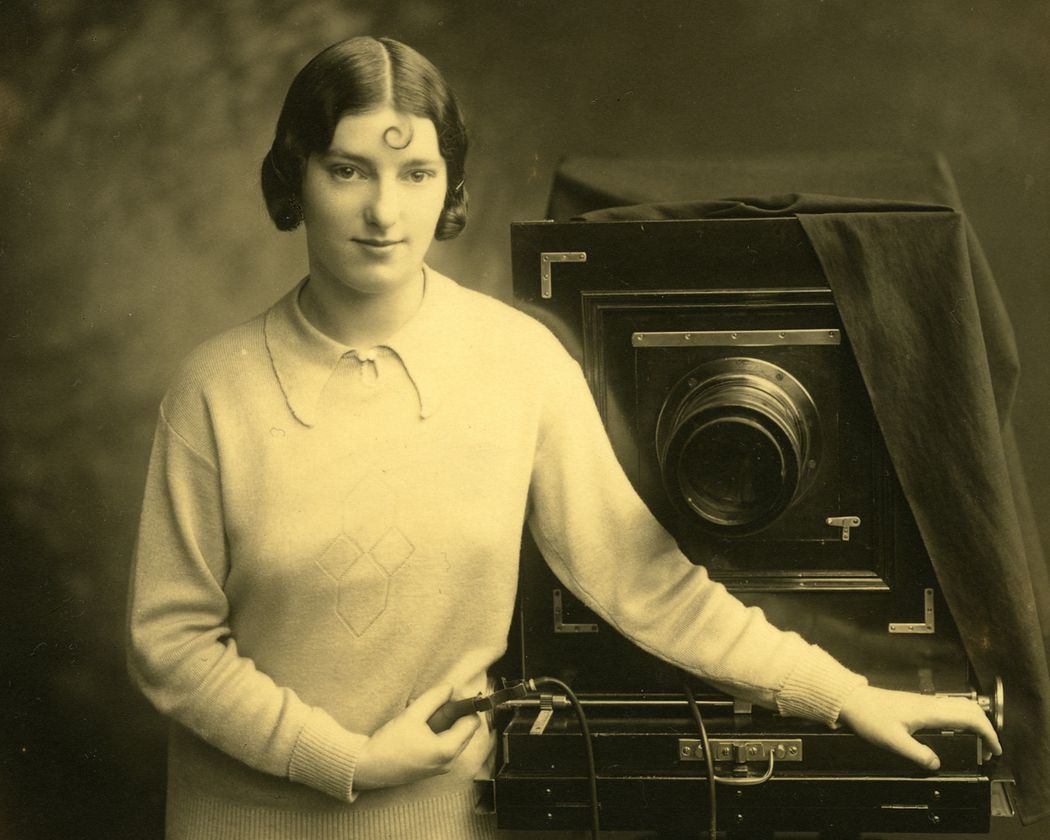
Margaret Hardman
©National Trust Images/E. Chambre Hardman Photographic Collection
Barbara Hepworth
The Barbara Hepworth Museum and Sculpture Garden is based in the studio Hepworth established in 1949, in search of more space to work on her sculptures. "Finding Trewyn Studio was a sort of magic," wrote Hepworth. "Here was a studio, a yard and garden where I could work in open air and space." Trewyn Studio remained her studio until her death in 1975. Here she explored the potential of bronze for the first time, as well as continuing her work with stone and wood carving. Read more about the Barbara Hepworth Museum and Sculpture Garden.
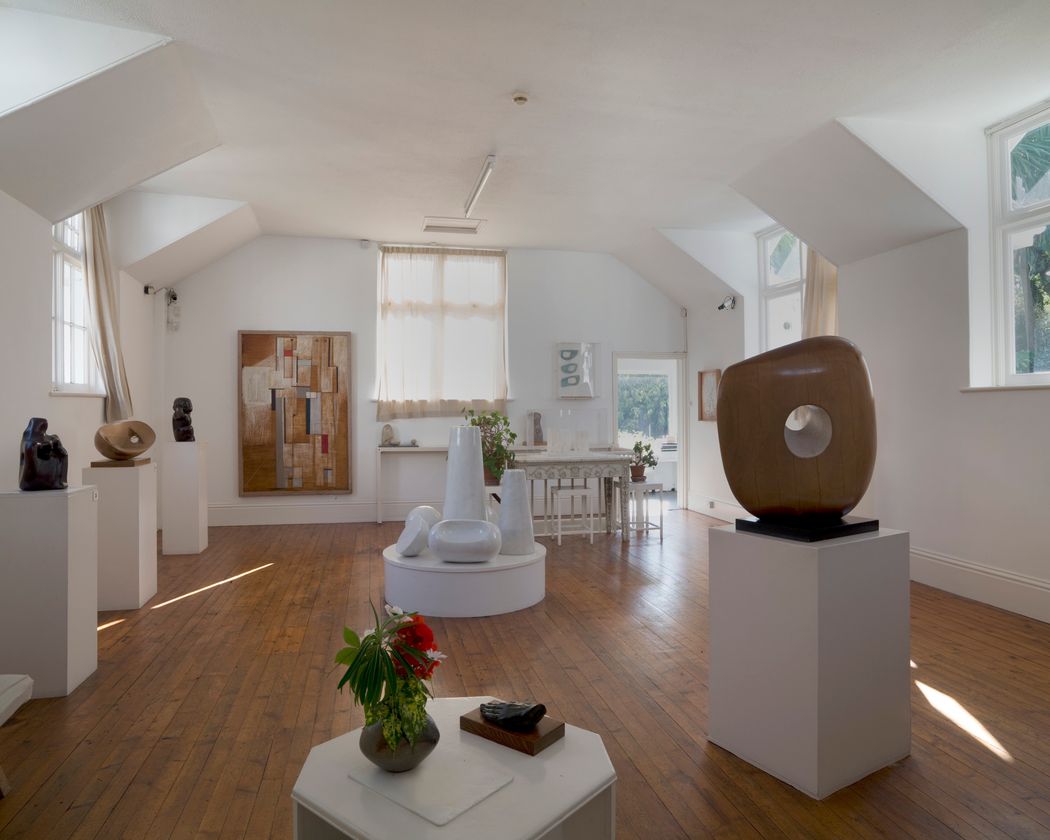
Barbara Hepworth Museum and Sculpture Garden
Margaret Macdonald Mackintosh
One of the key figures in the emergence of the 'Glasgow Style' in the 1890s, Margaret Macdonald Mackintosh (1864–1933) was married to celebrated architect Charles Rennie Mackintosh; he is reported to have said, "Margaret has genius, I have only talent." Read more about The Mackintosh House.
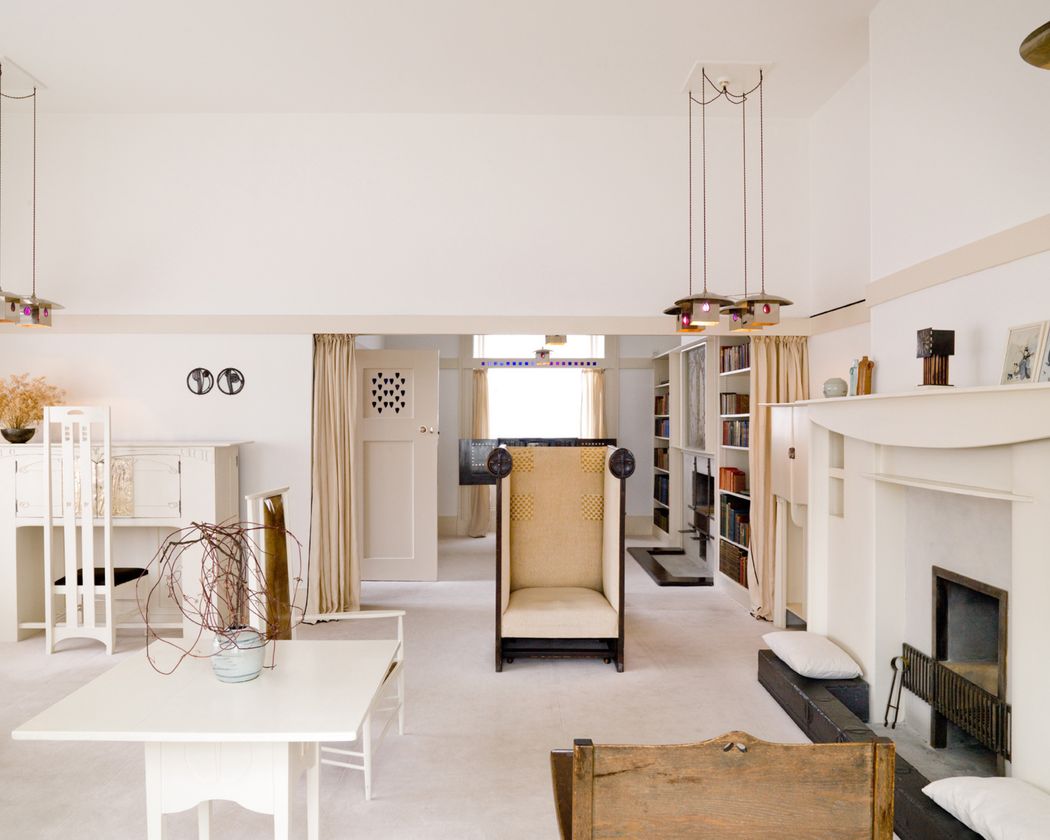
Mackintosh House
The Mackintosh House where artist Margaret Macdonald Mackintosh lived with her husband architect Charles Rennie Mackintosh
Lee Miller
Born in New York, Lee Miller went to Paris in 1929, where she met the Surrealist artist and photographer Man Ray. She became well known both as his muse and model and as a portraitist, fashion photographer and Surrealist in her own right. During the Second World War Miller acted as a combat photo-journalist, covering the Liberation of Paris as well as the liberation of Buchenwald and Dachau. Read more about Farleys House and Gallery and the Lee Miller archive.
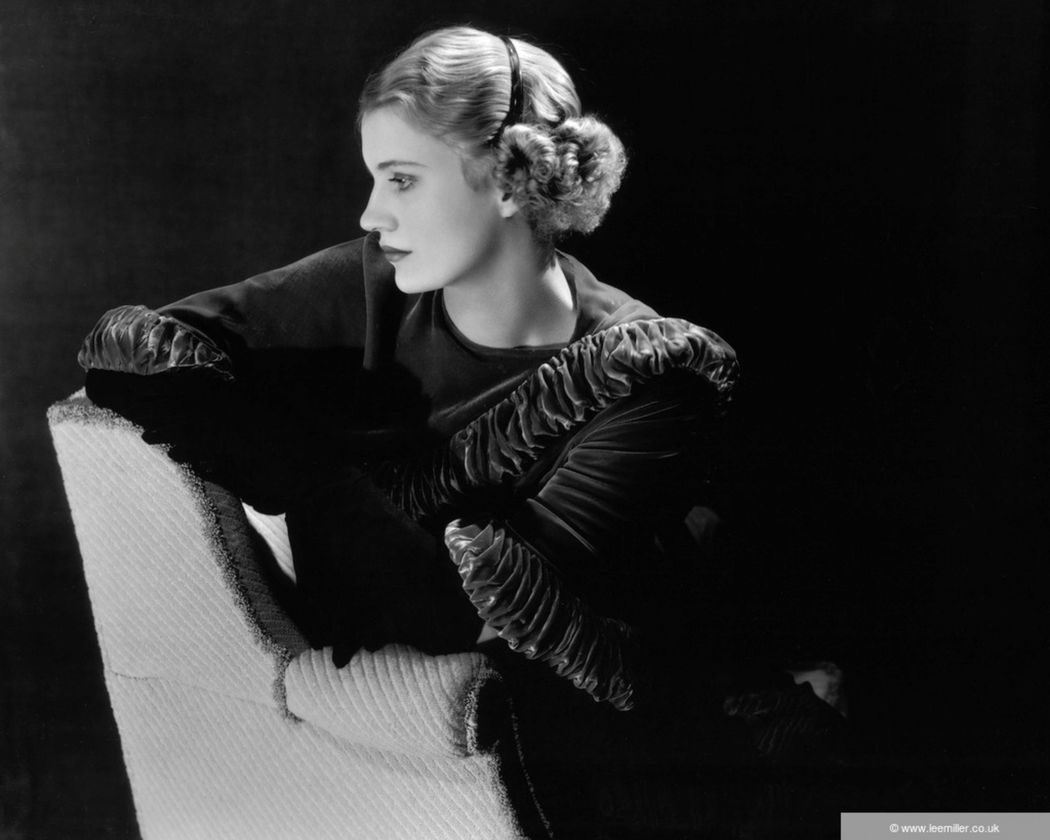
Lee Miller
Self portrait with headband, Lee Miller Studios, Inc., New York, USA c1932 by Lee Miller. © Lee Miller Archives, England 2022. All rights reserved. leemiller.co.uk
Gabriele Münter
Gabriele Münter (1877-1962) was a German expressionist painter at the forefront of the Munich avant-garde movement and a founding member of the 'Blue Rider' group. The 'Russenhaus' (Russian House) pictured below was the retreat where Münter lived with Wassily Kandinsky and, later, the art historian Johannes Eichner. Read more about Münter House.
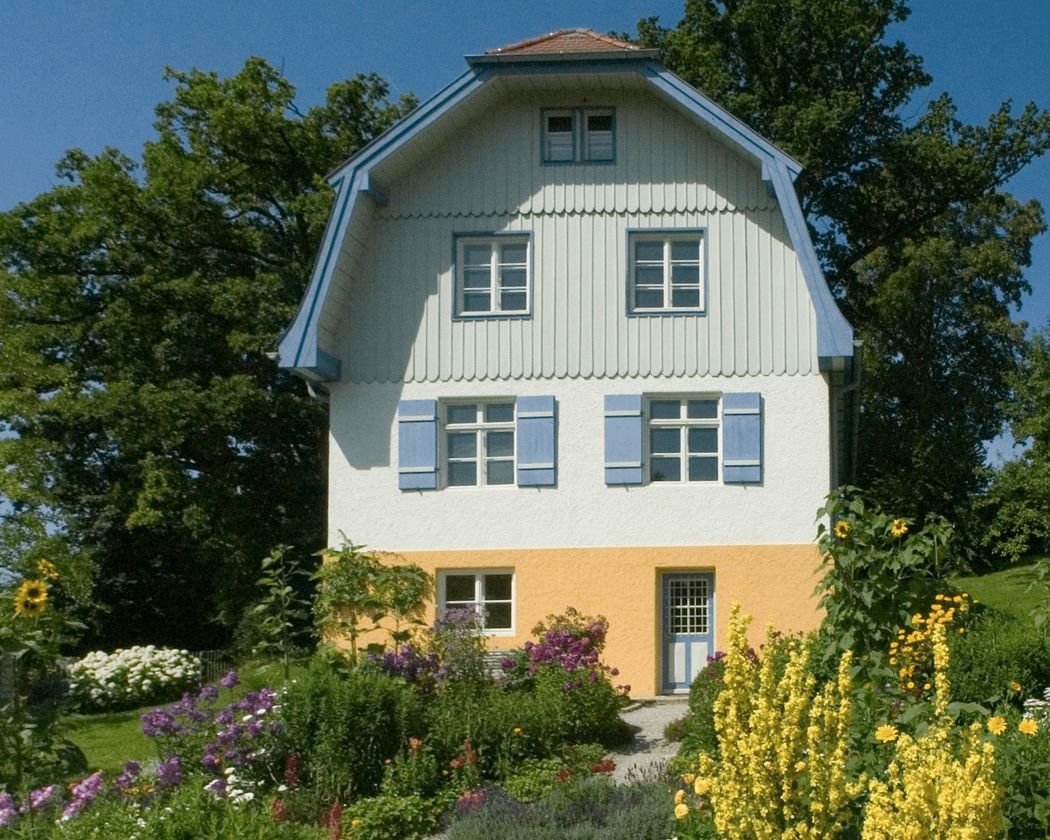
Münter House
Marianne North
The English biologist and botanical artist Marianne North (1830-1890) devoted her life to travelling across the world and documenting the flora, fauna and culture she encountered. Having exhibited her work in London in 1879, Marianne offered to give the collection to the Royal Botanic Gardens at Kew and to create a Gallery in which to display them. Read more about the Marianne North Gallery.
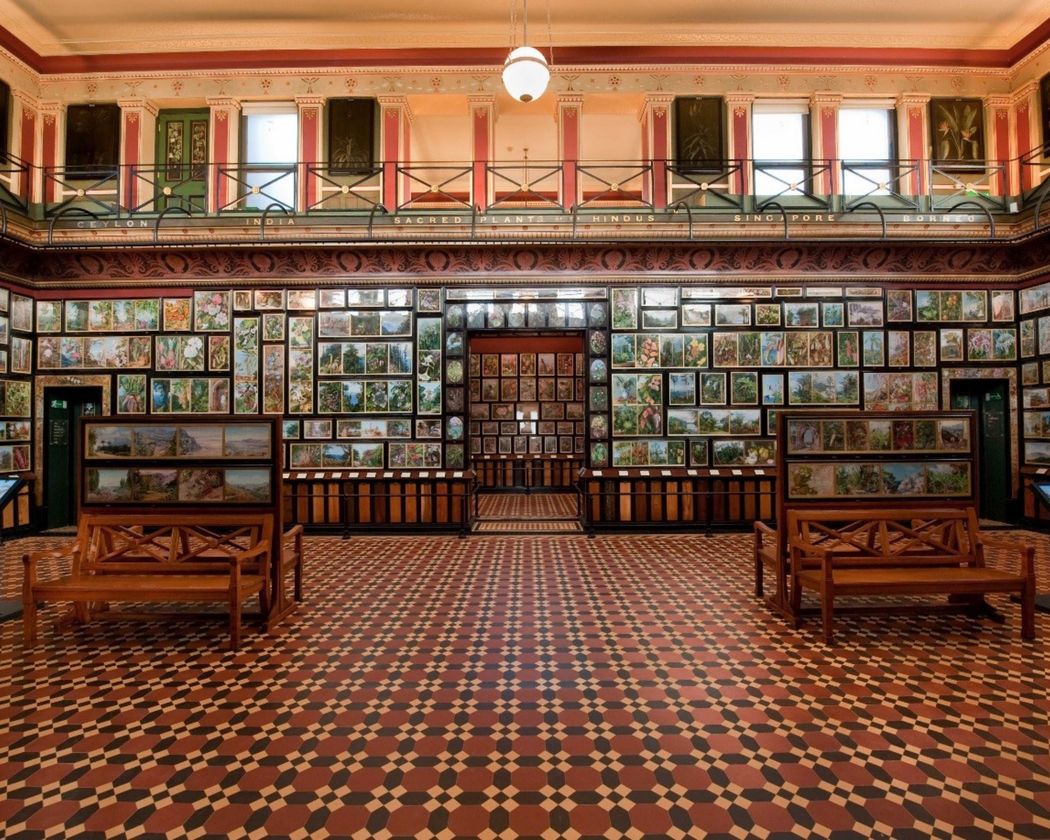
Marianne North Gallery
A purpose-built gallery in Kew Gardens
Beatrix Potter
Writer, artist and illustrator Beatrix Potter (1866-1943) purchased Hill Top Farm in 1905, with the profits from her first illustrated books, including the Tale of Peter Rabbit. She extended the old farmhouse, and enjoyed furnishing it with well-chosen antiques. For Beatrix, Hill Top provided a refuge away from London, and became a place of independence and inspiration. Read more about Hill Top.
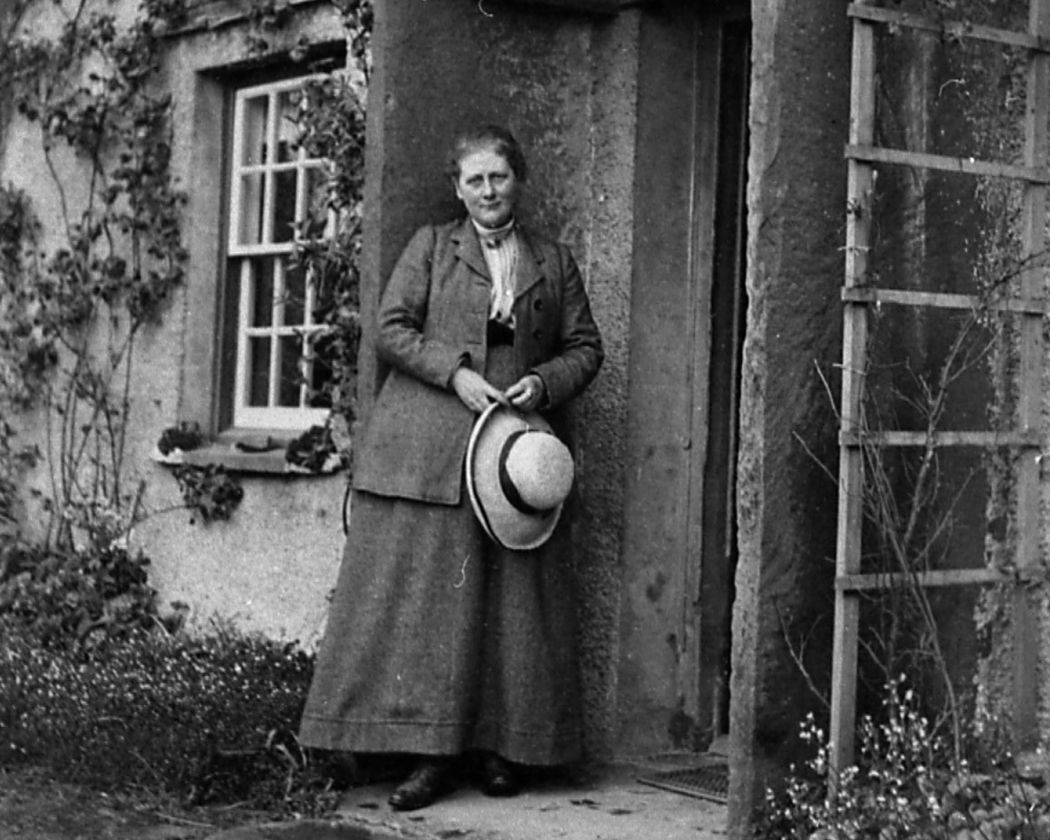
Beatrix Potter outside Hill Top
Mary Watts
Mary Watts (1849-1938) married G F Watts in 1886 beginning a strong artistic partnership. Mary was a renowned designer in her own right, founder of the Compton Pottery (1900) and creator of Watts Chapel. This Grade I listed Arts & Crafts Chapel is today recognised as one of the most important art nouveau buildings in Britain. Read more about Watts Gallery - Artists' Village.
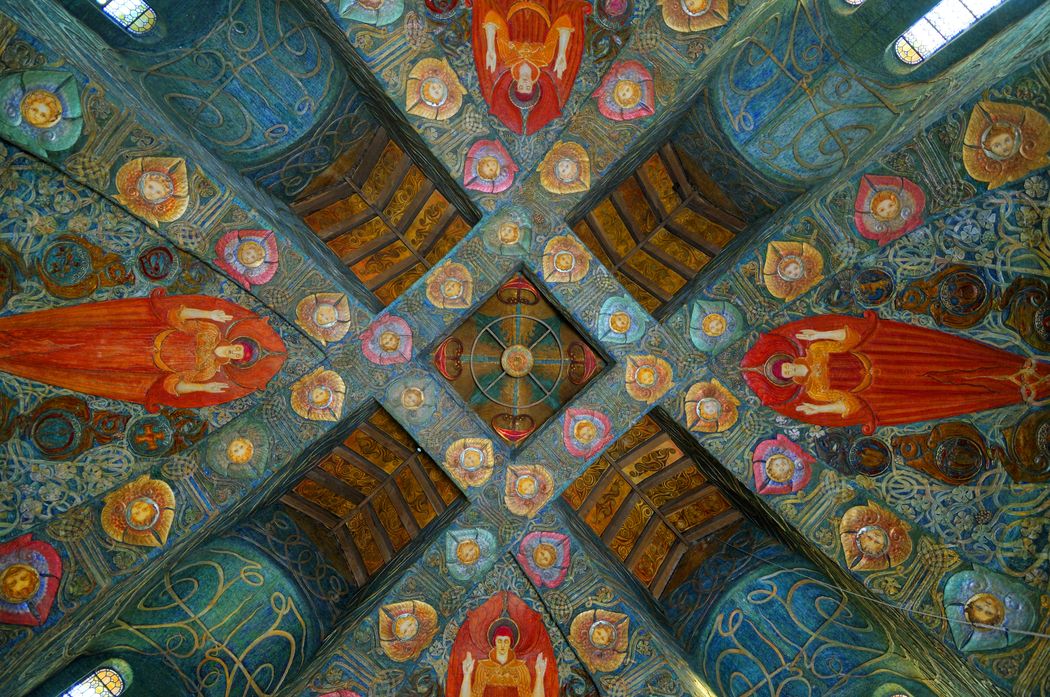
Watts Chapel ceiling
